When sourcing hats for wholesale or manufacturing, it is essential to be aware of the materials employed in hat production. An appropriate material can help you find the most suitable hats for specific applications. This post walks you through the most popular hat fabrics on the market, so you know what to choose for your business.
13 types of hat materials
There are many fabrics to choose from, and each has its pros and cons. Now let me introduce you to some common materials for making hats.
Cotton
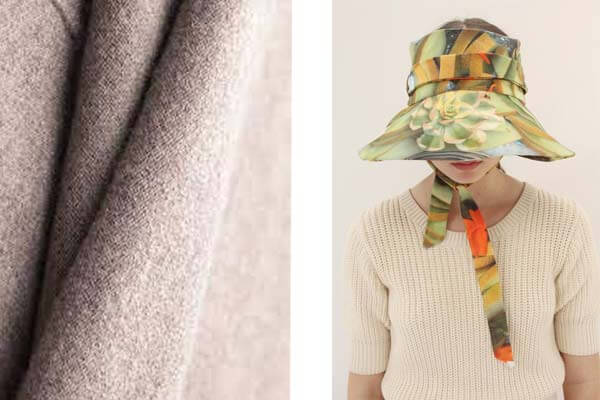
Cotton is the most popular material for making hats. It features good softness and moisture absorption, and it has low allergenicity, making it suitable for making children’s hats. However, cotton’s durability is average, and it is prone to shrinking and wrinkling. Therefore, cotton is often blended with materials such as polyester to enhance its durability.
Linen
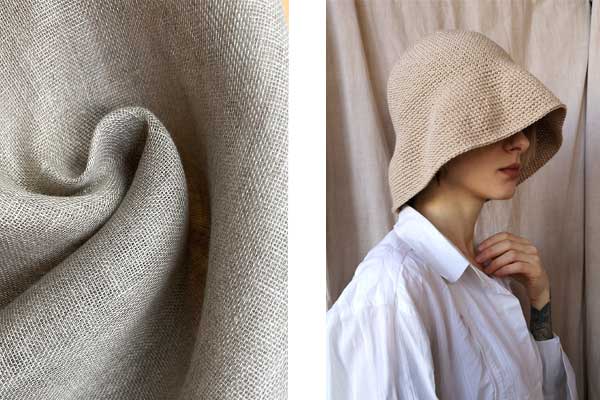
Linen is made of the fibers of the flax plant. It’s durable, soaks up water well, and looks shinier than cotton. It is a high-maintenance fabric but wrinkles easily. Linen hats can keep you cool on hot days and give people an elegant look. Common linen hats include Newsboy hats, op hats, duckbill caps, etc.
Wool

Wool is composed of soft animal fibers, typically sourced from merino sheep or lambs, but it can also come from alpacas, camels, llamas, or angora goats. This material is known for its durability, resistance to wrinkles, moisture-wicking properties, and flame resistance.
Additionally, they offer excellent insulation and moisture-wicking capabilities, making them suitable for crafting winter hats such as knitted caps, baseball caps, and berets.
Felt
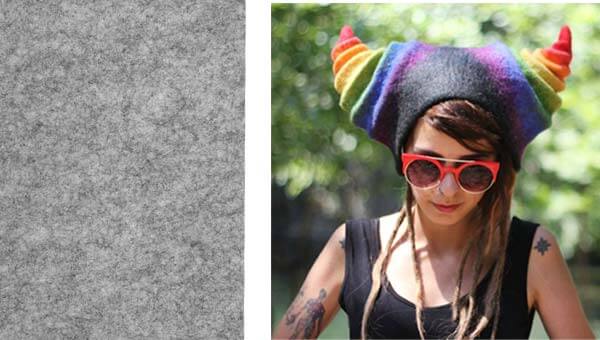
Compared to normal felt, the felt for making hats is softer. It is a non-woven cloth that is produced by matting, condensing, and pressing woolen or fur fibers like beaver fur, muskrat fur, nutria coypu fur, etc.
It has good wear resistance and insulation properties, making it an ideal choice for winter hats. Various types of hats can be made from felt, including wide-brimmed hats, berets, and top hats, etc. However, the drawback of felt hats is that they are relatively heavy, and they are not easy to clean and maintain their shape.
Straw
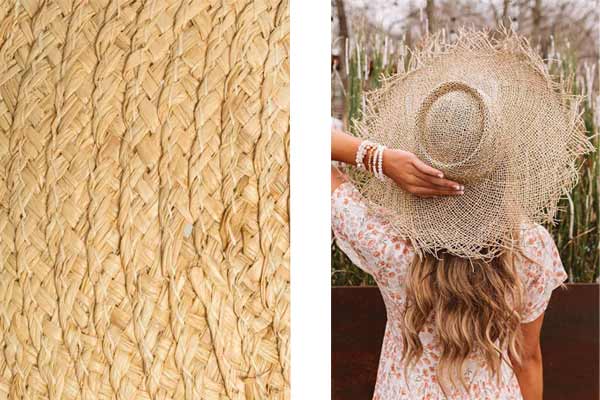
Straw is obtained from various plants such as wheat, raffia, and jute, etc. Hats made from different plants have distinct characteristics. For instance, raffia straw creates hats that are packable and crushable. Hats made from straw are always sturdy, durable, waterproof, and have a natural, rustic look. They are suitable for making sun hats, fisherman hats, Panama hats, and other casual hat styles.
Currently, straw hats are divided into handwoven and machine-woven categories. Machine-woven hats are more affordable, but handwoven hats offer finer craftsmanship and are often used for brand enhancement and special customization.
Leather
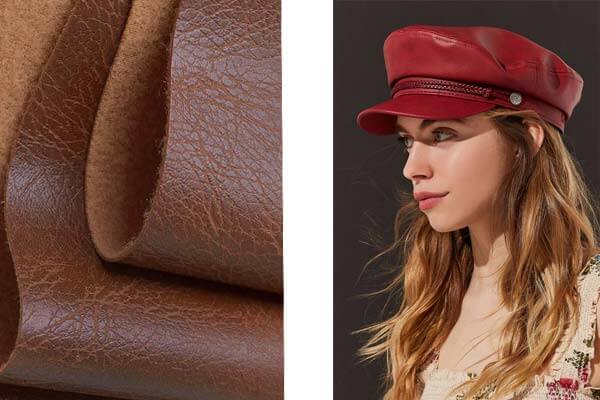
Leather is made from the skins of animals, mainly cattle, sheep, and goats. The surface of the leather is abraded to remove imperfections. Leather features durability, and the longer it is used, the softer and more comfortable it becomes. Its unique natural texture and feel make it ideal for crafting distinctive hats such as cowboy hats, pirate hats, flat caps, etc.
The above are all natural materials, all of which have the characteristics of being breathable, lightweight, and environmentally friendly. However, 100% natural materials tend to be more expensive, so they are often mixed with other synthetic materials to make various functional types of hats.
Polyester
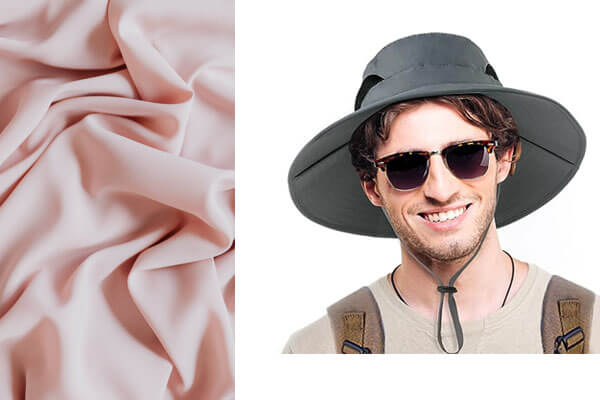
Polyester fiber is extremely lightweight and durable, and it is not easily prone to wrinkling. It can be dyed in various colors and does not fade easily. So it is suitable for making various types of hats, such as bucket hats, baseball caps, sun hats, etc.
However, pure polyester fiber lacks breathability and can generate static electricity. It may even cause skin irritation or allergic reactions. Therefore, cap manufacturers often blend it with natural fabrics like cotton and linen to improve the performance of hats.
Nylon
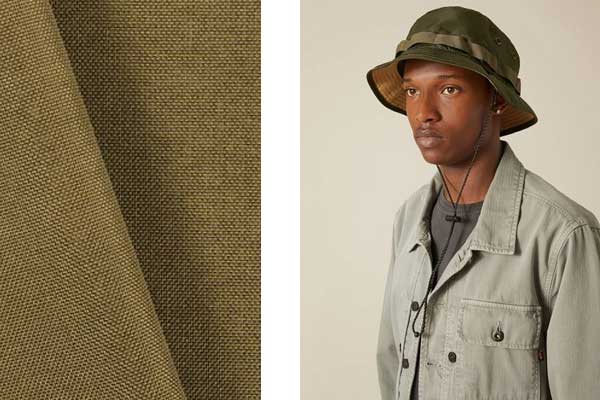
Nylon is also a polymer base, featuring lightweight, durable, and stretch. And it is also not easy to wrinkle or fade. Nylon can be lustrous or dull. Hats made of nylon are easy to care for, washable, and quick to dry. Dirt doesn’t cling to its smooth fibers, it can even be cleaned with a moist cloth. It is suitable for making outdoor sports hats, rainproof hats, and fisherman hats that emphasize waterproofing or durability.
However, its drawback is that it is not breathable. If the hat requires good breathability, you can choose materials like cotton and linen to blend.
Denim

Denim is typically made from cotton fibers. It is a true classic material when it comes to everyday, casual hats. Typically characterized by its thickness and mid- to heavy-weight nature, denim is known for its exceptional durability and comfort when worn. It is most commonly used in the production of baseball caps, sports hats, and some casual hat styles.
Acrylic
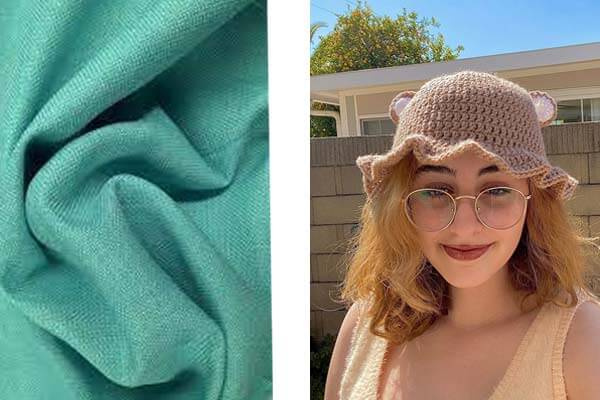
Acrylic fiber has a wool-like appearance and feel, and it provides good insulation. However, it is lighter and easier to care for than wool. And it also has a higher level of durability. Because it is more affordable than wool, it can serve as a wool alternative in some situations. Common types of hats made from acrylic include knit caps, duckbill caps, beanies, etc.
The drawback of this fabric is that it is not breathable and can generate static electricity easily.
Plastic
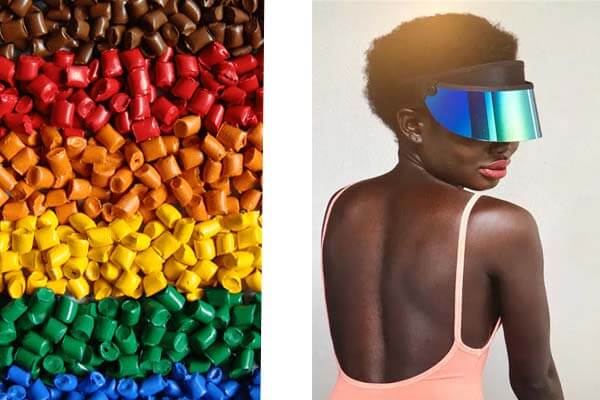
Due to its lightweight, waterproof, and easy-to-clean characteristics, plastic is often used to make functional hats, such as sun hats, shower caps, safety helmets, raincoat hoods, etc. Its drawback is that it is not breathable.
Faux suede
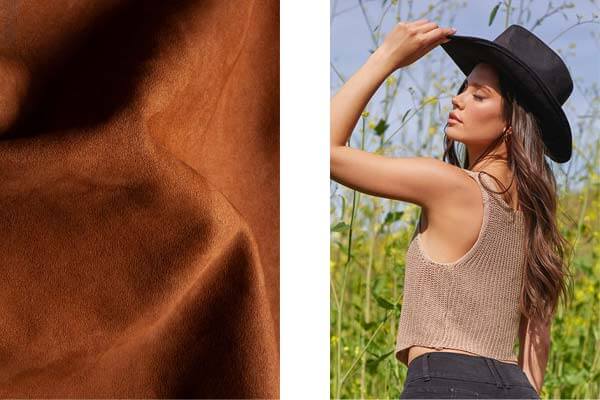
This synthetic material is designed to mimic the appearance and texture of natural suede, with a soft, smooth, and delicate feel. Compared to genuine suede, faux suede is more durable, less prone to wear and tear, and easier to maintain. Additionally, because it doesn’t use animal hides, it is more environmentally friendly and affordable.
This material is frequently used in the production of pilot hats, berets, and ear muff hats. Also, it is commonly used for hat trims to enhance the hat’s fashion appeal. However, it is not as breathable as real leather, which can lead to discomfort or overheating of the head.
Velvet
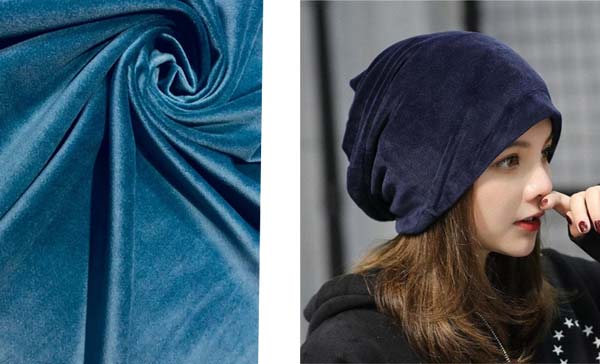
Velvet is a smooth fabric with a pile weave. Due to the high cost of 100% natural velvet, synthetic velvet is currently more popular. Synthetic velvet shares similar characteristics with natural velvet. It also boasts a luxurious appearance, a soft and comfortable texture, and excellent insulation properties. Thus, it is a frequent choice for crafting winter hats like berets.
Additionally, it is often used for accent and line hats. The texture of velvet can be somewhat heavy, so it may not be suitable for making lightweight or sporty-style caps.
4 considerations when choosing the materials for hats
Application
Different materials are suitable for different hat types and purposes. Because the characteristics of the materials directly affect the functionality and suitability of the hats. For example, when making summer hats, breathability and lightweight are key factors, so natural materials like cotton and linen are often chosen.
When making winter hats, warmth is the primary consideration, so materials with high insulation properties such as wool and down are typically selected.
Quality
There are many factors that can affect product quality, such as loose threads, cracks, or misaligned stitches. If the hat design includes adjustable parts, these components need to feature flexibility and reliability. Quality directly impacts the product’s performance, durability, and customer satisfaction. And good quality can also make your product more competitive.
Comfort
People may wear hats day and night. If the hat is not comfortable, the wearer may experience headaches or skin discomfort. In addition to the fabric, the stitching inside the hat can also affect comfort. For example, rough or protruding stitching may cause discomfort.
Safety
Safety is a crucial factor, especially when manufacturing children’s hats. In addition to meeting national standards for regular parameters, such as formaldehyde content and pH value, the production of children’s hats also needs to comply with safety and protective requirements for children. For example, while adult sun hats may have windproof chin straps, children’s sun hats should include anti-choking designs on the straps.
Furthermore, all hats must undergo needle detection to inspect any broken needles left in the finished products, in order to prevent harm to consumers’ personal safety.
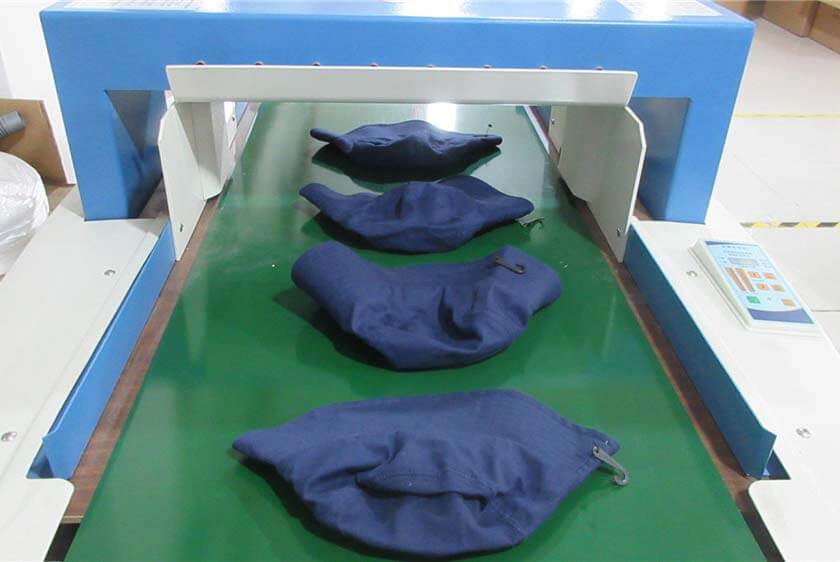
As a leading sourcing company in China, JingSourcing has helped dozens of clients purchase and customize hats in different materials and styles from factories. We have cooperated with 200+ manufacturers across China and offer you a competitive price. You just tell us what you need, and we can help you deal with everything that occurs in the process, including production inspection and shipping as required.

Leave A Comment